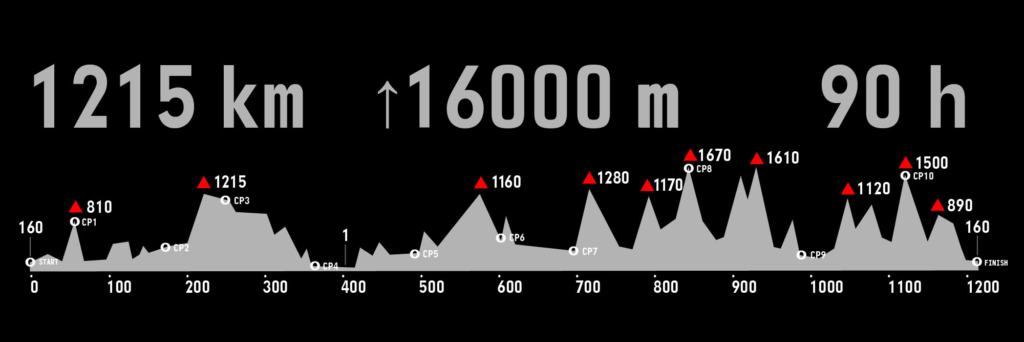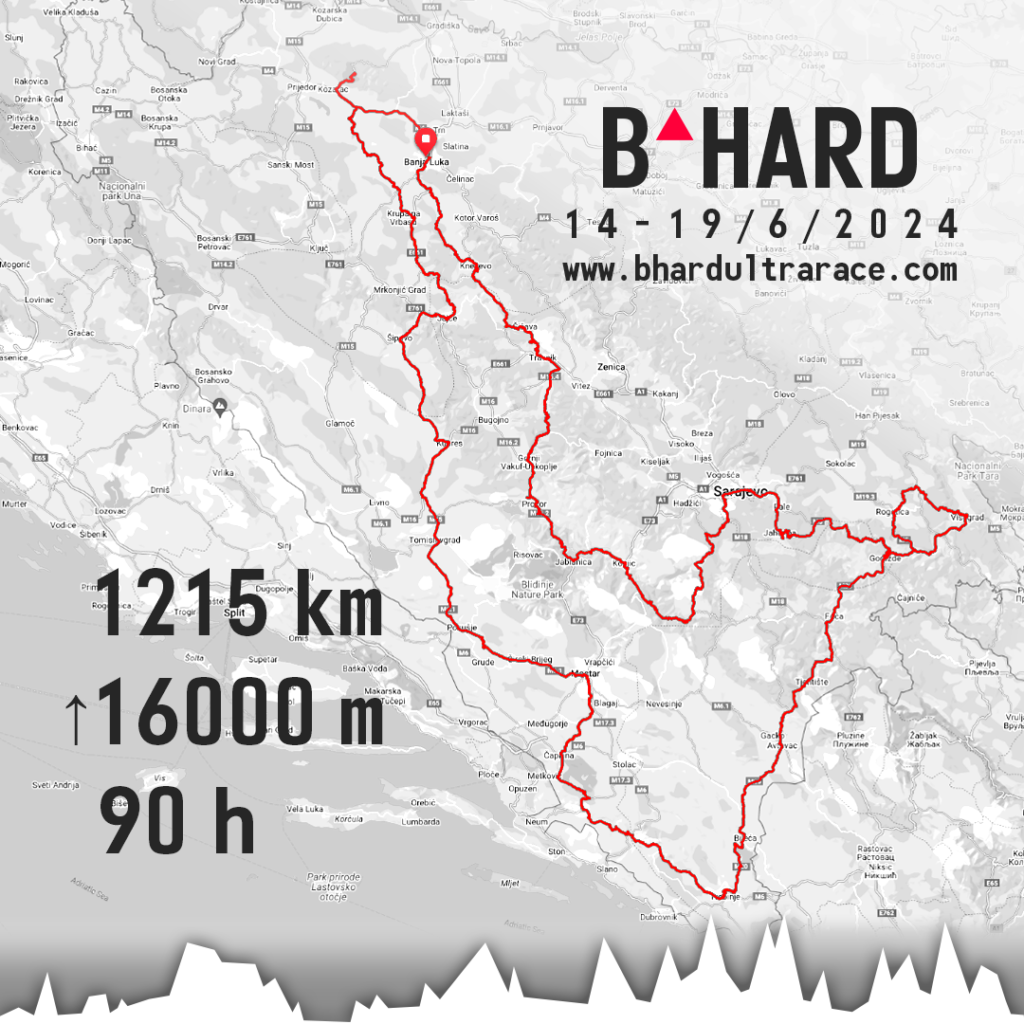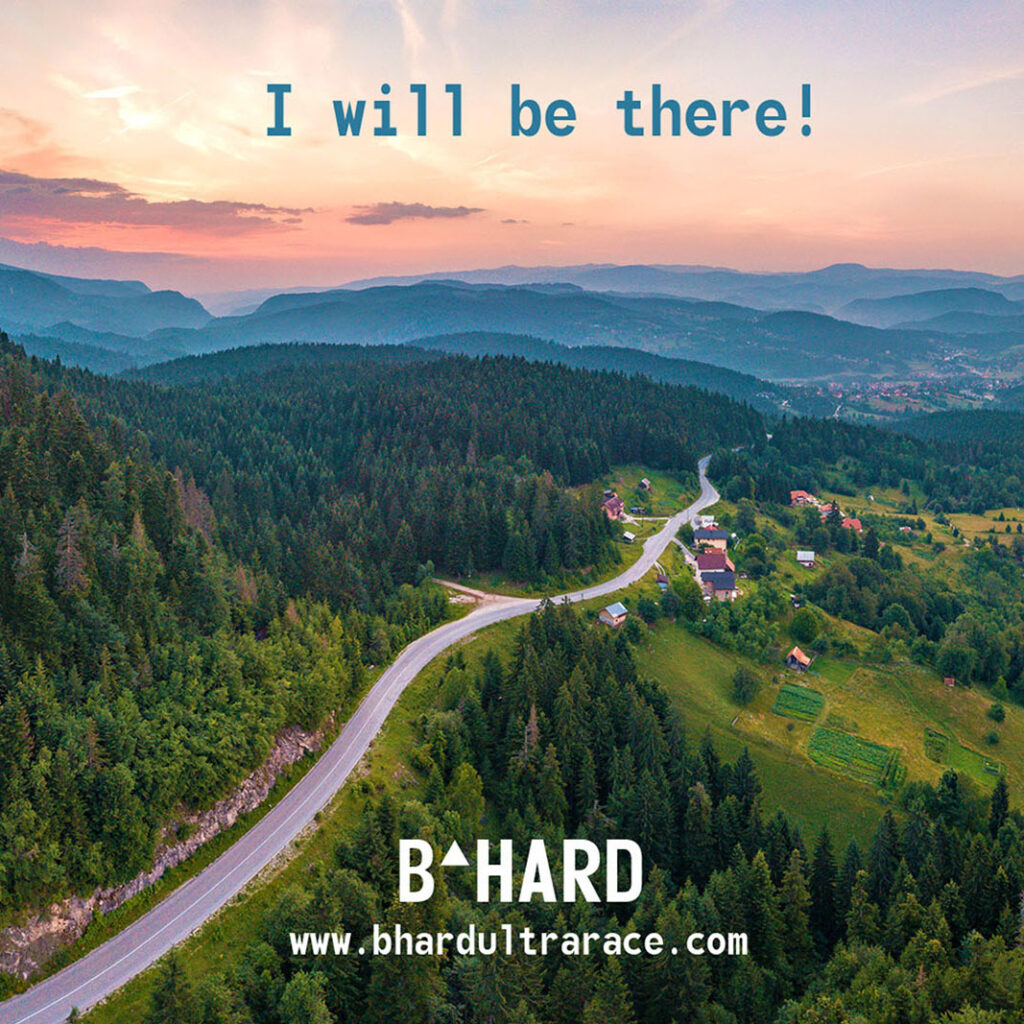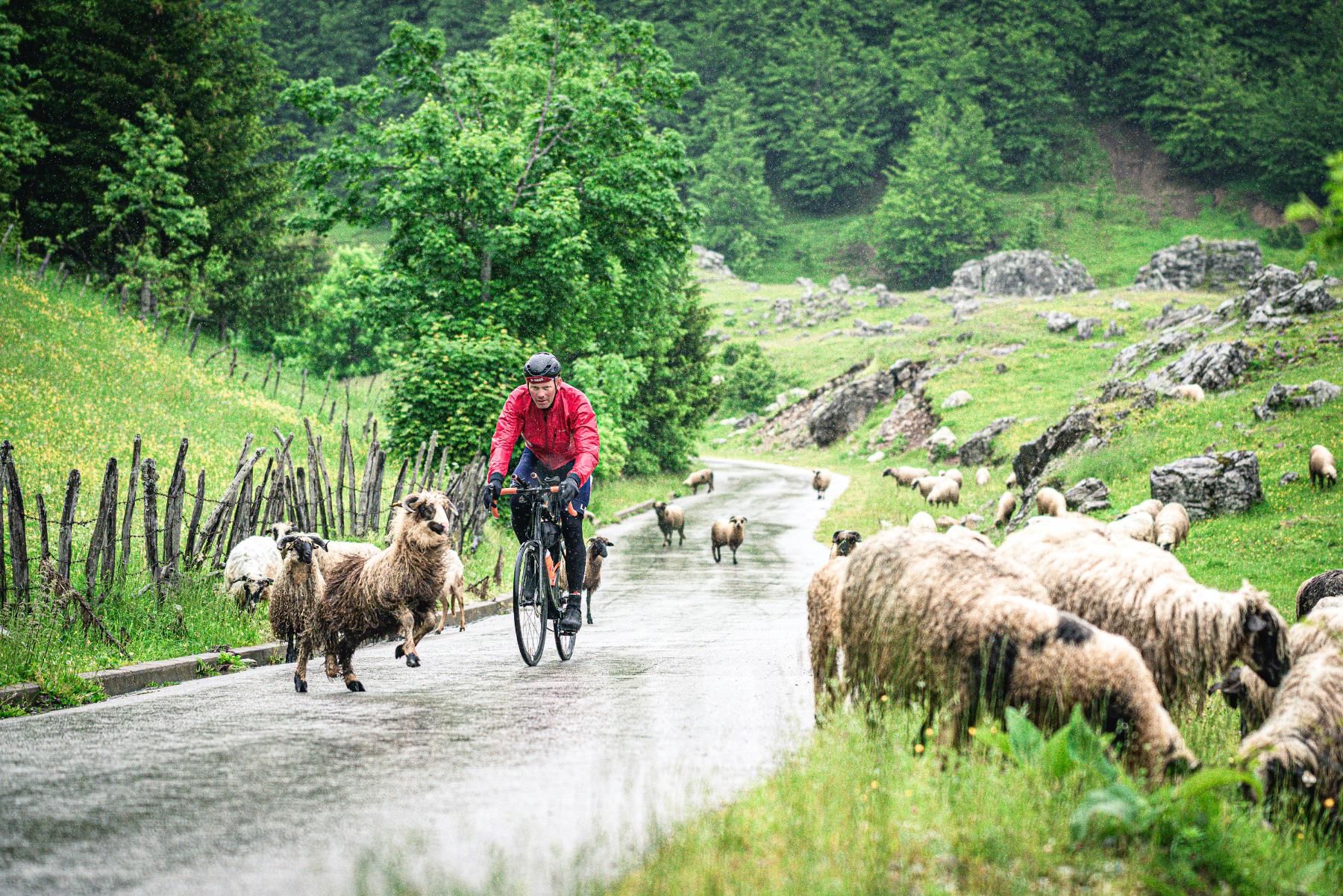Let’s do a quick overview of the route. The roads are a mixture of main, regional and local roads, completely surfaced with asphalt (save for any eventual roadworks on the route). The condition of the surface ranges widely – from brand new asphalt to broken and patched up sections. Comfort is a relative term in the case of ultradistance cycling but 28 mm tyres are perfectly fine for the job. Many riders have completed the route without issues even on 25 mm tyres, while some prefer 32 mm or larger tyres, which can only be more comfortable while not being significantly slower. The roads in Bosnia & Herzegovina are generally not too busy traffic-wise, except around the cities of Mostar and Sarajevo. However some roads are narrow and generally in Bosnia & Herzegovina there is no “hard shoulder” for cyclists to ride on, e.g. you share the main part of the road with other traffic, so you always need to leave some room on your right-hand side.

The country is quite hilly, as you may have figured out yourself by now, so there are lots of tunnels throughout the route, the longest one being a 2100 m long modern tunnel with lighting and sidewalks between CP5 and CP6 and a series of 39 consecutive tunnels (some short, some long and usually lit) approaching CP7 and some tunnels on the other parts of the route. It is obligatory to go into “night mode” riding through the aforementioned sections, regardless of the time of day you happen to reach them. Of course, it’s advisable to use common sense and keep track of what’s going on behind you prior to entering any of the tunnels.
Also, while there’s normally no shortage of petrol stations and cafes along the main roads, except in the rural mountain areas, there’s a 100 km portion of the route between CP4 and CP5, specifically between Čapljina and Trebinje, that follows the famous Ćiro Bike Trail – an old narrow gauge railway converted to a (bumpy) public road and a marked cycling route. This portion of the route offers virtually no restocking options except a very nice hotel/restaurant in Ravno, as an oasis at about halfway of the aforementioned section. Also, this section might be quite intimidating if riding alone at night while it offers very nice views during daytime.

Feel free to check the last year’s version of the route (with exaggerated total elevation), but please keep it for internal use and for educational purposes only, as you will receive the final version of the integral route as well as segmented (CP-to-CP) route after we do a fresh scouting of every centimeter of it shortly prior to the event:
https://ridewithgps.com/routes/42810582
The B-600 route follows the main route until CP4 and then it shortly heads up North to the town of Jablanica, where it joins the main route again and follows it until the finish.
3) CHECKPOINTS IN GENERAL
Although predetermined by locations of select natural beauties and touristic destinations, the 10 obligatory checkpoints are pretty evenly and logically dispersed throughout the route and all of them offer commercial accommodation at the spot or nearby, while some come with restaurants attached to them. For those with a healthy appetite, it’s convenient to make a short stop and have a full course lunch at CP3 during the first day, followed by getting accommodation near CP4 for the first night. This plan should suit all but the most dedicated riders – the ones that are trying to outsmart the stopwatch – that are going to ride throughout the night.
From then on, the tactics will determine the remainder of the individual logistics but CP6 – that marks the halfway point of the route – is another great spot for tasting local cuisine. Riders in the brevet category will find it convenient to plan the second nightly rest at CP7, while the quickest racers will have already passed CP8 by this time.
It might be a good analogy to say that the section from the START to CP7 is the “B” part of B-HARD, because from CP7 until the FINISH it definitely becomes “HARD”. This section is the “all hell breaks loose” part of the route, with mountain pass after mountain pass – containing Cima Coppi, e.g. the highest point of the whole route (at CP8) as well. However, everyone should be able to reach CP9 (or at least the mountain preceding it) by the end of the third day and have a good night’s rest there before starting a relatively short fourth day, with a casual finish in the evening by 11 PM. Slightly quicker riders will complete the course during the fourth morning/day, while the quickest ones will have already finished on the third day or third night.
You can familiarise yourself with the checkpoint host towns and the descriptions of the route in-between them on our website:
4) CHECKPOINT ACCOMMODATION INFO
We have tried to make it as easy as possible to obtain accommodation on the route, therefore practically all the CPs offer commercial lodging options – for those riding a predefined plan, it would be a good idea to reserve ahead, while those racing against the clock might want to do it on ad-hoc basis.
Here’s a provisional list of checkpoints (subject to small changes):
CP3 Kupres: Hotel Maestral – the actual CP – only at 242nd km of the route but you can drop in ad-hoc should you need to
CP4 Mostar: Zigana Apartments – right next to the CP / ziganaapartments@gmail.com / +38762518920 / or several other accommodations on Booking.com
CP5 Trebinje: Hotel Central Park – the actual CP / info@hotel-centralpark.com / +38759490850
CP6 Sutjeska: Hotel Mladost – nearby the CP / office@sutjeskanp.com / +38758233130
CP7 Višegrad: Hotel Andrićgrad – the actual CP / andricgradinfo@gmail.com / +38766703722
CP8 Jahorina: Hotel Rajska Vrata – the actual CP / rajskavrata.jahorina@gmail.com / +38757272020
CP9 Konjic: Hotel Garden City – the actual CP / recepcija@gardencity.ba / +38736735550
CP10 Vlašić: Mountain Hut Erik Brandis – the actual CP – you can drop in ad hoc but this is very close to the finish anyway
Of course, there are several other accommodation options right on the route in-between the actual checkpoints.
5) THE MATH
Let’s just do some quick math – for those of you who may be tackling this kind of challenge for the first time – if your average riding speed for the route is 20 km/h (which is realistically quite slow), it will take you less than 61 hours of riding to complete the whole loop. Stopping for three nights of 6 hours each (which is quite long really) will add another 18h to your total time. Add 2.5h of total stopped time during each of the 4 days onto that and you end up at 89h in total. So you can see that, if you have good amounts of stamina, some strength, quite a bit of willpower and no major issues – you can “easily” complete the route within the posted time limit.
Those of you going for the best result will ride at between 22 and 26 km/h on average and will be aiming for very little sleep in total, which will get you to the finish line in the 60 to 80 hours range. Riders in the B-RACE category should keep in mind that completing the route under 84h qualifies them for Race Across America, while for B-1200 LRM riders there’s no need to rush it (and they get an additional hour and 20 minutes on top of the 90h time limit). The time limit for B-600 BRM riders is 40h.
You can check the distribution of finishing times on here but bear in mind the weather was appalling last year, hence a large number of DNFs:
6) SOCIAL MEDIA
We are eager to see you train and inspire others to ride and potentially join the B-HARD family – so please tag us in your posts and stories as @bhardultrarace and we will happily share them.
If you are proud and excited of the fact that you will be riding with us, we have included a few photos you can post/share at your leisure – again tag us as @bhardultrarace and https://www.bhardultrarace.com (where applicable).
Also, let us see your efforts in detail by joining our Strava club: www.strava.com/clubs/563459

7) MISC
In case we’ve forgotten to mention something that you absolutely need to know at this point – do let us know and we will do our best to help out!
Take care and speak soon.




